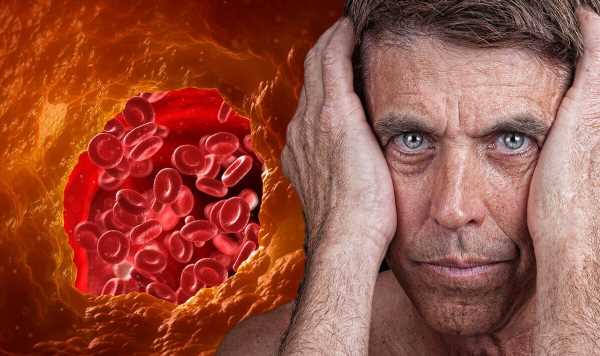High cholesterol: Nutritionist reveals top prevention tips
We use your sign-up to provide content in ways you’ve consented to and to improve our understanding of you. This may include adverts from us and 3rd parties based on our understanding. You can unsubscribe at any time. More info
Cholesterol – a waxy substance found in your blood – is needed to build healthy cells. However, high cholesterol can make it difficult for enough blood to flow through your arteries. This is a precursor to heart disease.
Although this process often goes undetected, some people may experience symptoms.
For example, yellow bumps, also known as xanthelasma, can show up around the eyes or nose. They’re made of cholesterol deposits.
“In some people, it’s a sign that you have high cholesterol,” said Doctor Daveluy, MD, FAAD, a dermatologist with the Wayne State University School of Medicine in Dearborn, Michigan.
“But in about half of people, it’s not.”

Speaking to the American Academy of Dermatology Association (AAD), the doc said: “Having the bumps, though, is a sign that you should have your cholesterol checked.”
How to get rid of xanthelasma
According to the American Academy of Ophthalmology, xanthelasma do not go away on their own.
“They tend to stay the same size or grow larger,” explains the health body.
“While they are generally harmless, you may want to remove them for cosmetic reasons.”
DON’T MISS
High cholesterol: Warning signs in your body of ‘excess cholesterol’ [INSIGHT]
Erectile dysfunction: When it’s life-threatening [ADVICE]
Omicron: Symptoms relates to ‘individual’s genetic profile’ says expert [TIPS]
Xanthelasma is treated by removing the deposit with:
- Extreme cold or freezing surgery (called cryotherapy)
- Laser surgery
- Traditional surgery to remove and repair the skin
- Extreme heat surgery (electric needle)
- Chemical peels.
How to ward off high cholesterol
You can lower your cholesterol by making lifestyle changes and taking medications.
The latter is usually recommended if the former fails to deliver results.
According to the NHS, to reduce your cholesterol, try to cut down on fatty food, especially food that contains a type of fat called saturated fat.

Saturated fat can be found in meat pies, sausages and fatty meat.
“You can still have foods that contain a healthier type of fat called unsaturated fat,” notes the NHS.
Try to eat more of the following:
- Oily fish, like mackerel and salmon
- Brown rice, bread and pasta
- Nuts and seeds
- Fruits and vegetables.
Exercise can also deal a decisive blow against high cholesterol.

The British Heart Foundation (BHF) explains: “Getting your blood pumping by doing exercise will reduce your cholesterol.”
According to the BHF, being active helps your body move the bad cholesterol to your liver where it can be removed out of your system.
“You don’t have to join a gym or go on long runs if you don’t enjoy it, just look for chances to move more every day.”
You could try:
- Taking the stairs instead of the lift
- A brisk walk instead of a slow walk
- Doing two-minute bursts of jumping jacks several times a day
- Yoga or pilates if you can’t get out.
Source: Read Full Article
